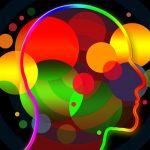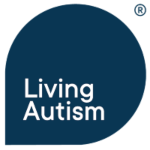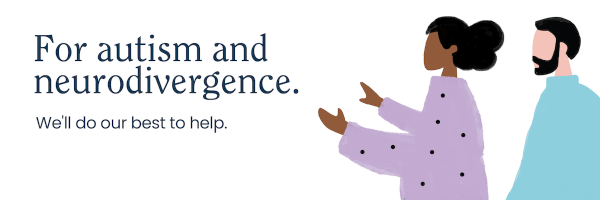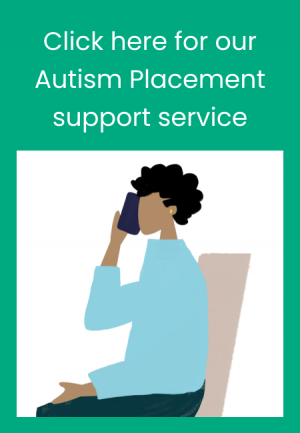 This article offers a brief overview of autism and comorbid conditions.
This article offers a brief overview of autism and comorbid conditions.
Autism is often linked with other conditions. Where one or more conditions co-exist, they are called comorbid conditions.
The characteristics of autism, according to DSM 5, are as follows –
- Persistent challenges in social communication and social interaction across multiple contexts
- Restricted, repetitive behaviours, interests or activities
- Hyper- or hyporeactivity to sensory input
Autism is most often, but not exclusively, linked with intellectual disabilities, ADHD, OCD, epilepsy and childhood-onset schizophrenia.

Research continues to establish more exact comorbid figures; however, below are the numbers at the time of writing –
- Number of people with autism and OCD (Obsessive Compulsive Disorder) – around 17% (van Steensel et al, 2011) with individuals who have a diagnosis of autism showing a 2-fold higher risk of a later diagnosis of OCD (Meier et al, 2015)
- Number of people with autism and an intellectual disability – 56% (Watanabe et al, 2015)
- Number of people with autism and ADHD (Attention Deficit and Hyperactivity Disorder) – around 30% – 50% (Leitner, 2014)
- Number of people with autism and epilepsy – around 20% (Besag, 2018)
A substantial number of children with autism can also display gastrointestinal symptoms – 79.3% (Mannion et al, 2013).
According to Autistica, 79% of autistic adults are also affected by mental health issues such as depression.
Autism and OCD
 There are several overlaps in the observed behaviours of autistic people and those who have obsessive compulsive anxiety disorders.
There are several overlaps in the observed behaviours of autistic people and those who have obsessive compulsive anxiety disorders.
Repetitive behaviours and recurrent, intrusive thoughts are characteristics of both conditions. This makes it difficult for clinicians to distinguish between the two. Figures for comorbidity of autism and OCD are around 17% (van Steensal et al, 2011) and (Russell et al, 2016).
Behaviours which are repetitive in autism can be a result of sensory differences where an individual is sensory-seeking and self-regulating. Therefore, it is an enjoyable behaviour. In OCD the repetitive behaviours are as a result of anxiety, worry and fear or compulsions. Therefore, they are a distress. More information can be found here.
Autism and intellectual disability
 Autistic people tend to have spiky profiles. In other words, they can excel in some areas and find other areas extremely challenging. This makes it difficult to gauge the level of intellectual disability in people on the autism spectrum.
Autistic people tend to have spiky profiles. In other words, they can excel in some areas and find other areas extremely challenging. This makes it difficult to gauge the level of intellectual disability in people on the autism spectrum.
The Valuing People UK White Paper of 2000 defines intellectual disability as –
- A significantly reduced ability to understand new or complex information, to learn new skills (impaired intelligence), with
- A reduced ability to cope independently (impaired social functioning);
- Which started before adulthood, with a lasting effect on development.
The level of comorbidity of autism and intellectual disability depends on which tests are used.
A study by Baio et al published in 2018 found that amongst autistic children, 32% scored equal to or below 70 on the IQ test given. This indicates a co-morbid intellectual disability.
More information can be found here.
Autism and ADD/ADHD
Where autism and ADD/ADHD exist (around 30% – 50% of autistic people), the challenges which present at the forefront are around executive functioning, as this is a challenge in both conditions.
Characteristics of ADD/ADHD centre around –
- Difficulty maintaining attention
- Difficulty focusing on a task
- Impulsivity
- Distraction
This can mean that autistic individuals who are also diagnosed with ADD/ADHD will have extra difficulties in the following –
- Making decisions
- Remembering things in sequence
- Motivating themselves to carry out tasks which are not of interest to them
- Making plans
- Organising themselves and their schedule
- Controlling their impulses
There will also be a conflict within each individual. The autism characteristics will be requiring rigidity, routine, focus. The ADD/ADHD characteristics will be continuously shifting focus. This means that people who have autism and ADD/ADHD as co-morbid conditions will experience an increase in the experiences of their characteristics, as opposed to having one or other of the conditions on its own (Colombi and Ghaziuddin, 2017).
More information can be found here.
Autism and schizophrenia
Autism and schizophrenia are distinct conditions although they have shared clinical characteristics.
Autistic people and those with schizophrenia both display –
- Social withdrawal
- Poor eye contact
- Communication impairment
Severely anxious autistic people can also display –
- Thought disorder
- Paranoia
However, it is to be remembered they are distinct conditions and any intervention must address the issues of each condition. Diagnosticians must also be trained in both conditions so as not to miss the characteristics of either one.
Autism and epilepsy
The onset of epilepsy in individuals diagnosed with autism is between 8 and 26 years of age according to a study by Hara with approximately 20% of autistic individuals also experiencing epileptic seizures.The study showed there were two types of seizure – partial seizure and generalised seizures.
Partial seizures can be either simple or complex. Complex partial seizures are associated with alterations of consciousness, whereas simple partial seizures are not.
Generalised seizures could include atypocal absences and massive myoclonic seizures (seizures with jerks that could throw the person to the floor).
Typically, seizures are treated with medication.
Summary
Autism is a condition in its own right and interventions must take into account autism characteristics and the underlying reasons why autistic individuals experience the world differently from non-autistics.
However, some individuals will be diagnosed with autism and comorbid conditions.
Some comorbid conditions can be OCD, intellectual disability, ADHD, childhood onset schizophrenia, epilepsy, gastrointestinal conditions and mental health conditions such as depression and anxiety.
Therefore, autism can present as complex when diagnosed with other conditions. Each of the diagnosed conditions needs to be supported in the most appropriate way for that particular condition.
Editor’s Note
Readers might be interested to read the article on Medication Management for People with Disabilities.
________________________________________________________
If you need help looking for services for an individual with an autism spectrum condition, we will do our best to help. Click below for the Autism Placement Support Service.



